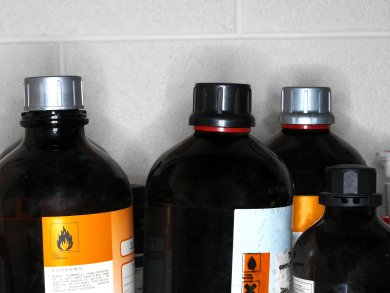US researchers have probed common solvents on surfaces and found surprisingly that a solute can behave as a solvent. They investigated the C–H stretching region using vibrational spectroscopy of 1-hexanol in cyclohexane on an α-alumina surface. The spectra revealed the ordering of alkyl tails and an orientational change in the cyclohexane solvent depending on the mole fraction of solvent to solute. At the interface, the researchers found that the hexanol becomes the solvent at a mole fraction of only 10 %, which is five times lower than the bulk solute-to-solvent mole fraction transition.
- When the Solute Becomes the Solvent: Orientation, Ordering, and Structure of Binary Mixtures of 1-Hexanol and Cyclohexane over the (0001) α-Al2O3 Surface
A. M. Buchbinder, E. Weitz, F. M. Geiger,
J. Am. Chem. Soc. 2010.
DOI: 10.1021/ja1068504




